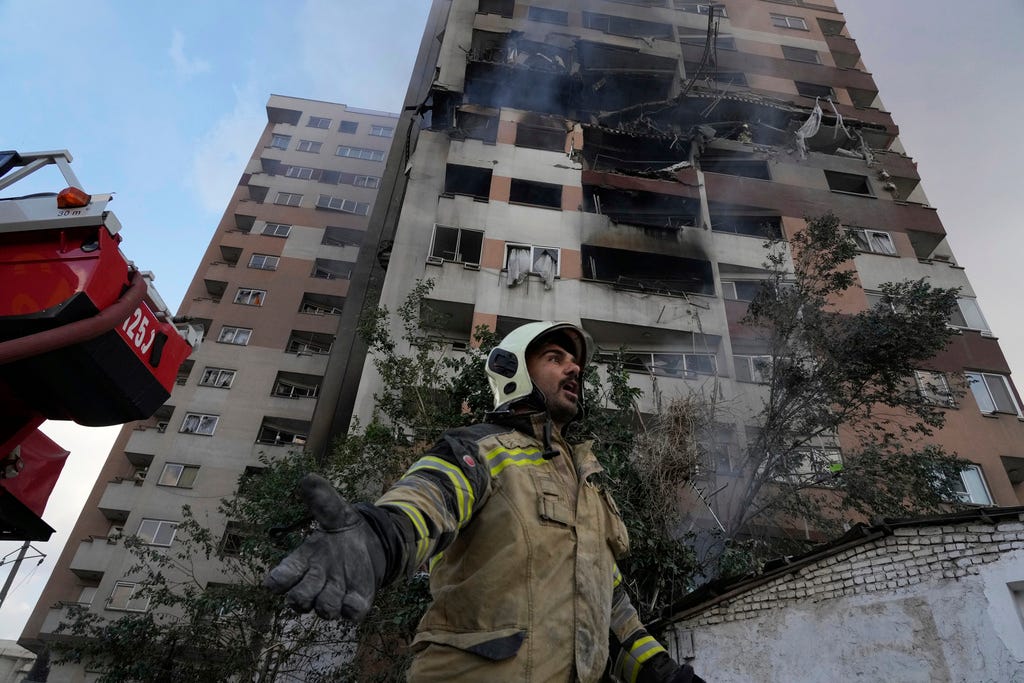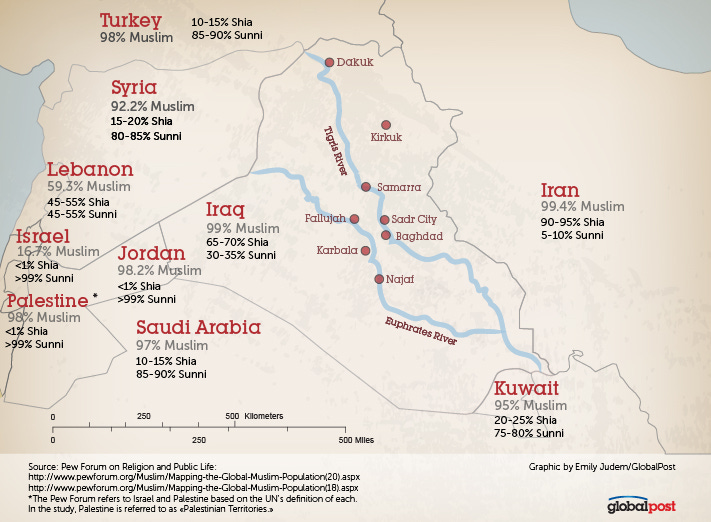A Sunni-Shia balance that once shaped the Middle East is faltering
Oil and religion have long been at the center of what fuels tension in the Middle East. But Israel and U.S.’ airstrikes on Iran, and a shifting oil market, are changing the dynamics.

A longtime Middle East hand who works in the oil markets once shared with me a broad framework to understand the complex history of the region, what fuels its layers of regional conflict and the ways in which global players so often intervene.
There is no doubt that the events of the last two weeks mark an historic turning point. First, Israel attacked Iran’s nuclear sites on June 13th. Iran retaliated soon after with missiles into Israel. Then, last Saturday, the United States intervened on behalf of Israel and, at least for now, a tenuous cease fire is holding. Meanwhile, all sides seem to be claiming victory and only time will tell how this all plays out and who actually wins and loses.
So this moment in history has me thinking of my old friend and that framing he suggested to analyze what fuels tension in the Middle East and what shapes its history. The short answer to what fuels conflict is, of course, oil. But the larger questions around what shapes history is that there is a balancing force that keeps the oil pumping. To find the answer, he encourages a focus on the fulcrum of the Sunni-Shia divide. In that fulcrum Iran embodies the Shia power base and Saudi Arabia represents the Sunni.
Both Iran and Saudi Arabia, who are mortal enemies, rank among the top 10 oil producing states in the world, with Saudi Arabia having a pumping capacity of approximately 11 million barrels per day and Iran about 4 million barrels per day, according to the US Energy Information Administration. Iran is aligned with China and Russia and Saudi Arabia is historically aligned with the United States.
The rivalry between Sunni-led Saudi Arabia and Shia-led Iran has fueled tensions and proxy conflicts across the region for decades. Both countries have used sectarian divisions to advance their own interests and colonialism and the involvement of external powers have often exacerbated existing tensions, exploiting their differences to maintain influence and control over resources.
It is important not to oversimplify here. It would miss the point to reduce the complex realities of the Middle East to a simple Sunni-Shia conflict, and it is important to understand the history of these streams of Islam, how they emerged and how Western powers exaggerated the difference as a way to keep the two traditions divided.
The difference between them centers around a debate over succession after the death of the Prophet Muhammad in 632, A.D. Muhammad had consolidated power in Arabia, but how that power would be sustained was in question. That debate split the community, with those arguing that leadership should be awarded to consensus around qualified individuals becoming the Sunni stream and others insisting that the only legitimate ruler must come through Muhammad’s bloodline defining themselves as Shia.
Beyond this complex weave of history through centuries, there are also many other factors, including nationalism, political opportunism, and economic grievances, that are always contributing to regional instability.
Keeping all that in mind, my friend said, “A thing to pay attention to is how the foreign countries are pushing the “hydraulics of oil”, allowing the Shia pistons to rise and pushing the Sunni pistons down and then allowing the Sunni to rise and pushing the Shia down. That up and down motion along the Sunni-Shia fulcrum is what keeps the oil rigs pumping throughout the region.”
He first shared his insights 20 years ago,at a time when it seemed the post 9-11 ‘Global War on Terror,’ as we used to call it, was favoring an ascendant Iran. The U.S. was slogging forward with troop build up in Afghanistan and then Iraq and all the while Iran was quietly exerting its control through the political power base of the Shia majority in Iraq and through its relationship in support of the Taliban in Afghanistan.
Iran was also busily arming its proxies in Syria,Yemen and elsewhere. So it seemed, the Iran piston was on the rise. Now with U.S. airstrikes taking place under the operation “Midnight Hammer” as a follow to the Israeli attacks, it is clear that Iran’s nuclear program is knocked to the backfoot once again. How severely remains uncertain. But we can expect the U.S. and Israel to continue to push forward with a shored up alliance with Saudi Arabia, its metaphorical Sunni piston rising.
But there are other forces unfolding now, and what might define this moment in history, is that the old dynamics are changing. The conditions that used to allow Western powers to keep control of the region through a precarious balancing of the two main streams of Islam, and thereby keep the oil flowing are now thrown off by the fact that the world’s oil markets have been radically transformed through hydraulic fracturing, or ‘fracking.’ New technology has allowed the industry to tap into vast oil and gas reserves that have transformed the domestic oil and gas industry, granting the U.S. much greater independence from foreign oil.
In less than 20 years, the world oil markets have been transformed by this new reality and the independent producers such as Iran and Saudi Arabia therefore hold much less leverage over Western powers, particularly the United States. That leads to the theory that Israel took this unique moment in time to knock its mortal enemy off balance, if not completely to the ground, because it knows that the U.S. with Trump in the White House is more likely to intervene on Israel’s behalf.
The situation, it seems, is ripe for historic change in the Middle East. The theocracy of the Shia mullahs in Iran should be very afraid of this moment as for the first time since the 1979 Iranian Revolution it seems that regime change in Iran is actually possible. Iran has overplayed its hand in using their proxy forces, from Hezbollah to Hamas, to weaken Israel and they have in effect spelled their own demise, effectively strengthening Israel’s hand.
The unpredictable element in all of this is that force which goes beyond the states such as Iran and Saudi Arabia and the religious hierarchy of their respective Shia and Sunni streams of Islam that prop up their governments. That power out there on the streets, beyond the government and the mosque, is the power of the people who have not yet spoken in all this.Israeli Prime Minister Benjamin Netanyahu and U.S. President Donald Trump also have their own domestic political pressures that will come to bear and that are not yet making their voices clearly heard.
This week on Substack Live, I had a chance to discuss this dynamic with Beena Sarwar, a veteran journalist, human rights activist and co-founder of the Southeast Peace Action Network (SAPAN.) Sarwar, who is herself from Pakistan but lives in Boston and who hails from a family that is of both Sunni and Shia traditions, understands that place in the middle where most people live that exists independently of the forces of government and religion.
When asked about how the war between Israel and Iran would play out in the Middle East and Asia, she reminded our audience of the importance of separating the actions of governments from their people’s: “The people are not fighting each other. I think it's the government and the policymakers that create and foster these kinds of divisions. It’s the arms manufacturers, the people wanting to hold on to their own power and making public statements against another community, which then incites people … And I just hope everybody kind of plays their part to pressurize the governments to do what the people want, which is, you know, peace.”






If you want to know more about the origins of the tensions in the Middle East, I suggest reviewing the Defense Planning Guidance for the 1994–1999, AKA the "Wolfowitz Doctrine". After the collapse of the Soviet Union, it was Wolfowitz's contention that to retain the US's superpower status, we had to prevent the rise of a monolithic Muslim state conglomeration by sowing conflict among Middle Eastern Muslim states.
Just how much of the tension in the Middle East is the result of the US's covert intervention is up for question. Much of the contention hinges on the focus on oil production and consumption to maintain power, wealth, and control.
In the meantime, China has shifted the paradigm toward using green energy instead of oil as a dominant means of power, wealth, and control. Trump has allied himself with the power base of oil production. It is no wonder that Trump consistently vilifies green energy and China. I strongly suspect using oil as a power base is a losing proposition. ...And China just might emerge as the new superpower in the world order.